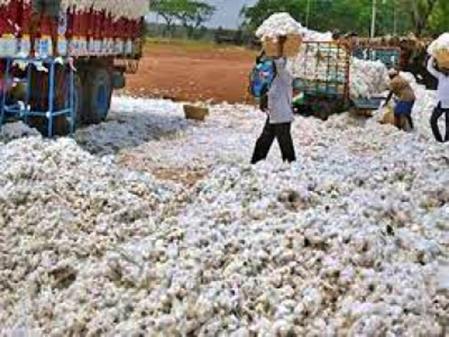India's Textile Sector Gets Booster Shot With Import Duty Exemption On Cotton
The duty exemption assumes importance in the backdrop of the US tariff hike of 50 per cent that has put India's exports of textiles vis-a-vis competing countries like China, Vietnam and Bangladesh.
The decision to extend the Customs duty on cotton, notified by the Central Board of Indirect Taxes and Customs, is expected to stabilise the input costs across the textile value chain, including yarn, fabric, garments, and made-ups, providing relief to manufacturers and consumers alike.
This strategic intervention ensures that the textile sector remains globally competitive while safeguarding the interests of domestic cotton farmers.
Most imports cater to specialised industrial requirements or brand-linked export contracts and do not replace domestic cotton, the statement explained.
Affordable, high-quality cotton strengthens India's position in export markets, reviving orders for small and medium enterprises as well as export-oriented units.
The textile-apparel value chain employs over 45 million people, and stable cotton supply is crucial to prevent job losses and encourage industry growth.
Consistent raw material supply expected to spur the production of higher-value fabrics and garments, supporting the government's 'Make in India' and domestic manufacturing goals.
Farmers' interests are safeguarded through the Minimum Support Price (MSP) mechanism operated by the Cotton Corporation of India Ltd. (CCI), which ensures that farmers receive at least 50 per cent above their cost of production.
Imported cotton often caters to specialized industrial requirements and does not substitute domestic cotton. Most imports occur during lean periods or when domestic stocks are insufficient, which minimizes competition with peak domestic procurement periods. The government monitors cotton prices closely and retains the flexibility to impose safeguards as and when required.
Cotton textile exports accounted for approximately 33 per cent of India's total textile and apparel exports during April–October 2024–25, valued at $7.08 billion, making it the second-largest contributor after readymade garments.
With 95 per cent of domestic cotton consumed by the textile industry, the duty exemption is expected to indirectly benefit farmers as global competitiveness enables mills to pay better prices to cotton farmers.
Various textile associations have welcomed the government's move to exempt all varieties of cotton from the 11 per cent import duty up to December 31, 2025.

Legal Disclaimer:
MENAFN provides the
information “as is” without warranty of any kind. We do not accept
any responsibility or liability for the accuracy, content, images,
videos, licenses, completeness, legality, or reliability of the information
contained in this article. If you have any complaints or copyright
issues related to this article, kindly contact the provider above.
Most popular stories
Market Research

- United States Lubricants Market Growth Opportunities & Share Dynamics 20252033
- UK Digital Health Market To Reach USD 37.6 Billion By 2033
- Immigration Consultancy Business Plan 2025: What You Need To Get Started
- United States Animal Health Market Size, Industry Trends, Share, Growth And Report 2025-2033
- Latin America Mobile Payment Market To Hit USD 1,688.0 Billion By 2033
- United States Jewelry Market Forecast On Growth & Demand Drivers 20252033






















Comments
No comment